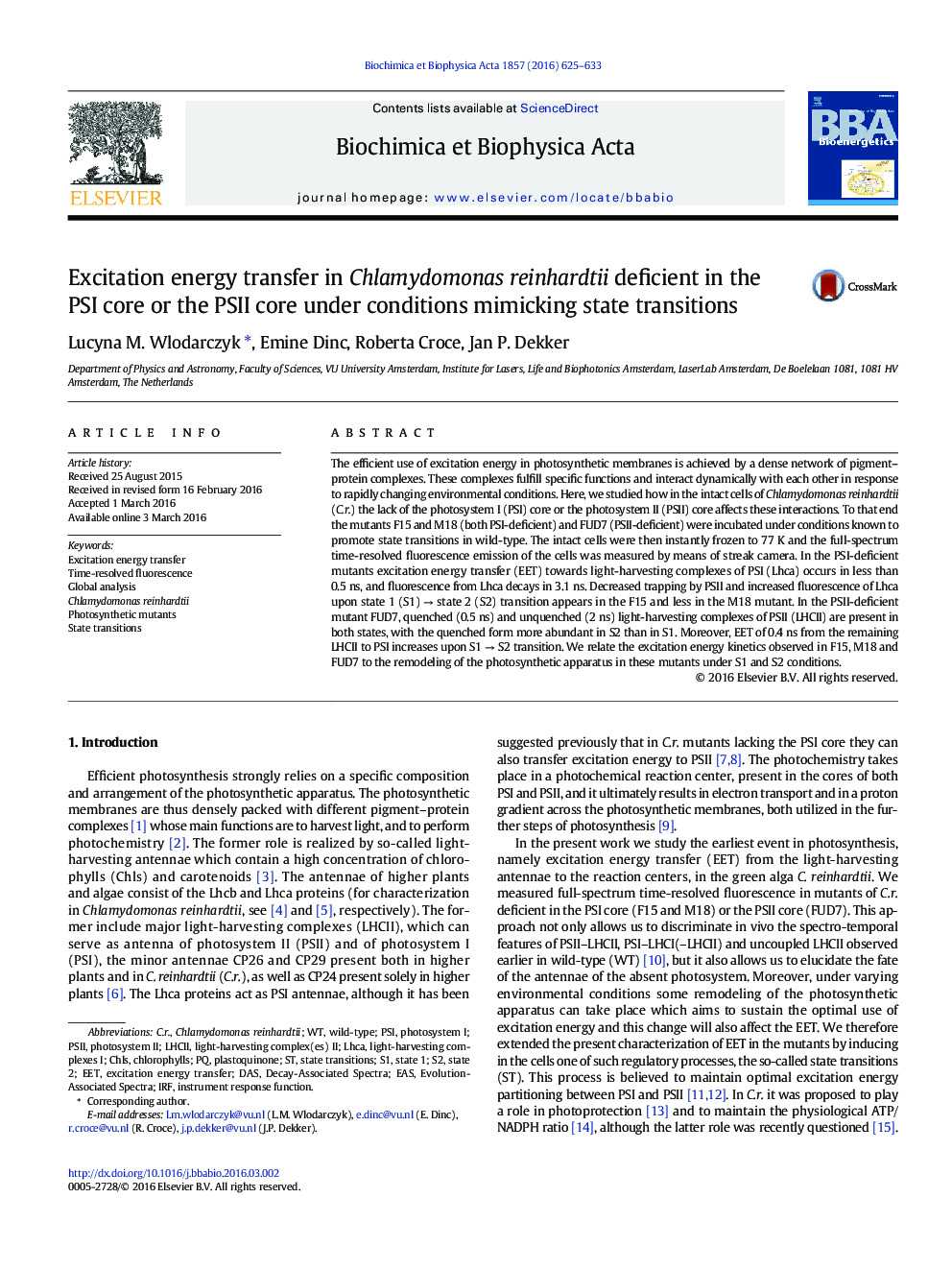| Article ID | Journal | Published Year | Pages | File Type |
|---|---|---|---|---|
| 1941916 | Biochimica et Biophysica Acta (BBA) - Bioenergetics | 2016 | 9 Pages |
Abstract
The efficient use of excitation energy in photosynthetic membranes is achieved by a dense network of pigment-protein complexes. These complexes fulfill specific functions and interact dynamically with each other in response to rapidly changing environmental conditions. Here, we studied how in the intact cells of Chlamydomonas reinhardtii (C.r.) the lack of the photosystem I (PSI) core or the photosystem II (PSII) core affects these interactions. To that end the mutants F15 and M18 (both PSI-deficient) and FUD7 (PSII-deficient) were incubated under conditions known to promote state transitions in wild-type. The intact cells were then instantly frozen to 77 K and the full-spectrum time-resolved fluorescence emission of the cells was measured by means of streak camera. In the PSI-deficient mutants excitation energy transfer (EET) towards light-harvesting complexes of PSI (Lhca) occurs in less than 0.5 ns, and fluorescence from Lhca decays in 3.1 ns. Decreased trapping by PSII and increased fluorescence of Lhca upon state 1 (S1) â state 2 (S2) transition appears in the F15 and less in the M18 mutant. In the PSII-deficient mutant FUD7, quenched (0.5 ns) and unquenched (2 ns) light-harvesting complexes of PSII (LHCII) are present in both states, with the quenched form more abundant in S2 than in S1. Moreover, EET of 0.4 ns from the remaining LHCII to PSI increases upon S1 â S2 transition. We relate the excitation energy kinetics observed in F15, M18 and FUD7 to the remodeling of the photosynthetic apparatus in these mutants under S1 and S2 conditions.
Keywords
Related Topics
Life Sciences
Agricultural and Biological Sciences
Plant Science
Authors
Lucyna M. Wlodarczyk, Emine Dinc, Roberta Croce, Jan P. Dekker,
